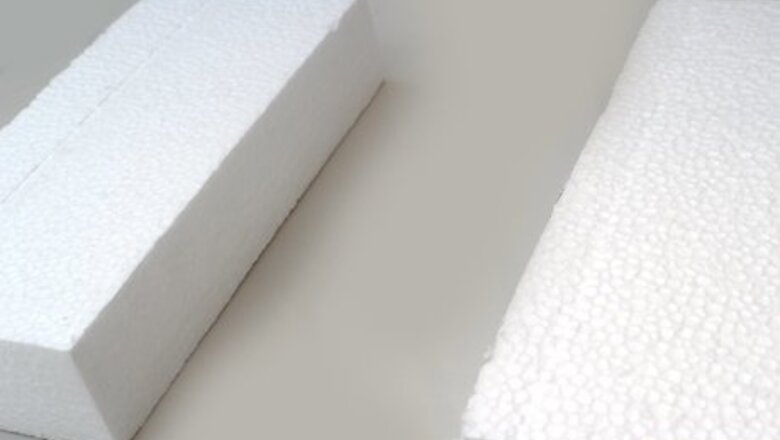
views
Building the Bridge
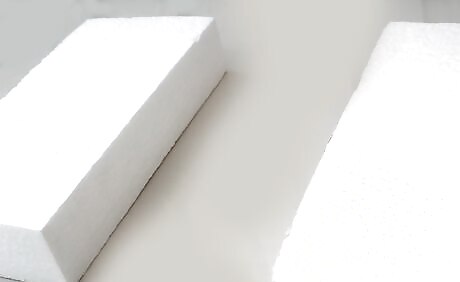
Design a support structure for your bridge. You will first need to build or find a structure that simulates the terrain on either side of the bridge. You can build a bridge across two, equally tall tables or build a structure out of wood to place your bridge on. It's usually best to build the structure so that you can hang a container of some type underneath the bridge.
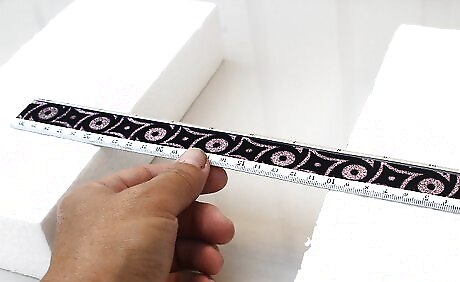
Determine your bridge length. Now that the support structure is in place, you need to measure the distance between the two sides of the support structure to determine the length that your bridge will need to span. It's a good idea to start with a short distance when building your first spaghetti bridge. Then, slowly increase the length of your bridges as you learn how to build them successfully.
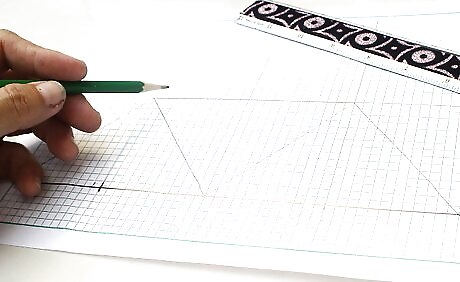
Design a template. Design your bridge on a sheet of graph paper first. Cover the paper with a clear plastic film, such as plastic wrap, and use it as a template. Lay the spaghetti strands over your drawn design to cut them to the right length and glue them together. Draw a sketch of your bridge on the graph paper first before laying down the clear film covering. Then lay your spaghetti over the lines you have drawn on the graph paper. Once you have ensured that the spaghetti has been cut to the proper specifications outlined on your graph paper, remove the spaghetti from the clear film covering and carefully glue the pieces together.
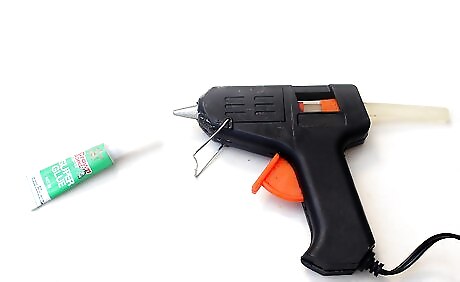
Choose your adhesive. The type of glue you use will make or break your bridge. Regular craft glue is a poor choice, as it is water based, which causes the pasta to soften when the glue is applied, and it takes a long time to dry. Model airplane glue and hot glue from a glue gun are easy to apply, but are slightly more flexible when they dry. This is not ideal for reinforcing the joints of your bridge. Epoxy, although messy, is the ideal solution for maximizing the strength of your bridge. Epoxy dries up firmly and will provide the best support for your bridge joints. Many brands of epoxy dry in five minutes or less. You can buy epoxy at a home improvement store or online. When working with very young children, you can use marshmallows or even popcorn to hold the joints together, rather than glue for fun and safety. This obviously makes for a less sturdy bridge, but the same general principles of engineering can be gleaned from the exercise.
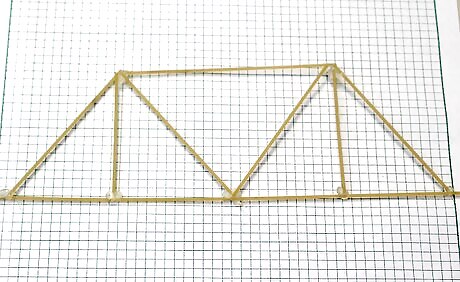
Build your trusses. Trusses are triangle-shaped support beams that attach point-side down to the roadbed of the bridge on either side. Attach the trusses to each other with glue. Trusses distribute the forces of the weight you will add to the bridge. Rectangular trusses will work, but will drastically decrease the weight or load your bridge can hold. Triangular trusses are ideal for building a spaghetti bridge.
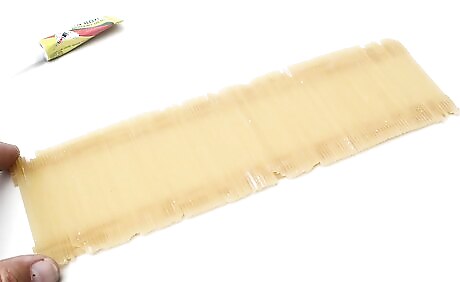
Create the roadbed. You can do this by gluing several layers of spaghetti to each other to make a thick, flat roadbed. You may want to leave the strands unglued in some layers so they will naturally move and help redistribute the weight.
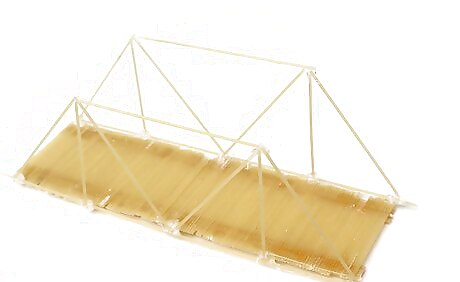
Attach the trusses. Securely attach the trusses you have built to each side of the roadbed and to the trusses on the other side. The finished bridge will have a roadbed on the bottom with trusses rising above on both sides, like walls and a roof.
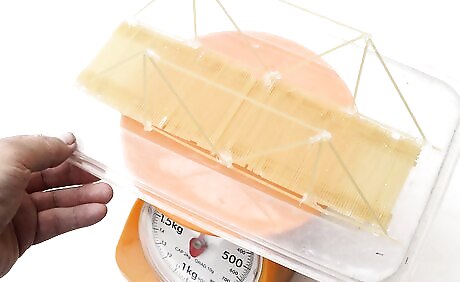
Weigh your bridge. Rather than setting the bridge itself on the scale, set it on something stable like a box and weigh both. Then, subtract the weight of the box. You can also use 2 scales, placing 1 underneath each edge of the bridge, and then add the weights together. Weighing the bridge is optional. This is usually done as an instructive method. It allows a teacher to show the relationship between the bridge's total weight and the weight it can hold.
Collapsing the Bridge

Set the bridge in place. Carefully position your spaghetti bridge over the support structure you arranged or built. Check that each side of the bridge has the same amount of bridge edge on the support structures to help stabilize it.
Hang a lightweight container under the center of the bridge. You might use half an envelope or a paper box. The size of the container will necessarily depend on the size of the bridge you have built. Use a string or bent paperclip to attach the container to the center of the bridge. A thin bridge may break immediately after you attach the container, but a thicker, stronger spaghetti bridge will hold. You can use multiple hanging points to distribute the weight evenly across the bridge. Alternatively, you can place the weight directly on the roadbed of the bridge. However, this will increase the chances of you accidentally collapsing the bridge when placing weights on it, so be very careful.
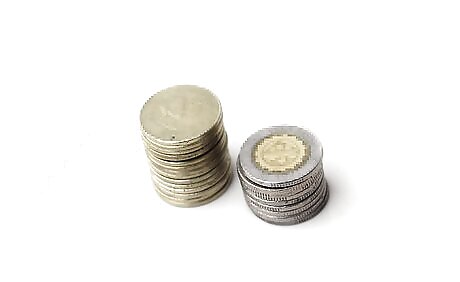
Acquire weighted objects. Again, the size and density of the weighted objects will depend on the size of the bridge you built. For smaller bridges, coins will work as weighted objects. For larger bridges, consider using something like bags of sand or, if your bridge is quite large, actual weights from a weight set. Make sure you know the actual weight of the objects you use so that you can accurately determine how much weight you’ve added to the bridge before it collapses.
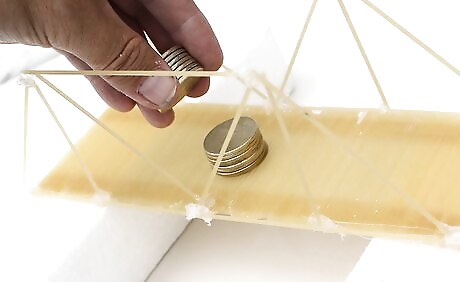
Add weight. Begin to add weights to the container a little at a time. Take care not to jar the bridge or cause the container to swing. This can be a very nerve-wracking process.
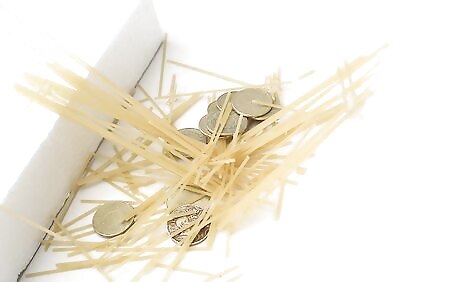
Watch the bridge collapse. Eventually, you will have added too much weight for your bridge to hold and it will collapse. After enjoying the bridge’s destruction, determine how much weight the bridge held by calculating the sum of the weights you added to the bridge.
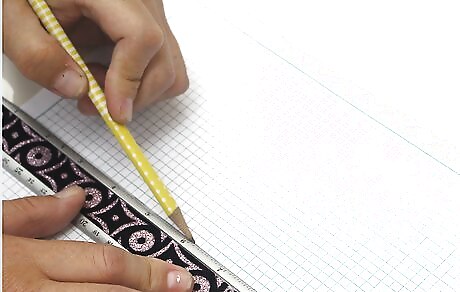
Go back to the drawing board. You will now want to go through this process again making minor alterations to the materials or adjustments to how you constructed the bridge. The goal here is to see if you can build a stronger bridge capable of holding more weight. Like any good science experiment, a little trial and error will be necessary.
Strengthening Your Bridge
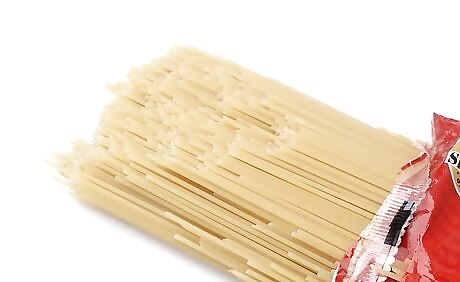
Select the best building materials. If you want to make a bridge that can sustain large amounts of weight, you will need to use the best materials. As stated above, epoxy is the strongest bonding agent you can use. Also, you want to make sure you have plenty of pasta on-hand to make the necessary reinforcements to your bridge. Consider the benefits and disadvantages of various types of pasta.Rounded spaghetti noodles may be better for some parts of your bridge while flattened noodles, like linguine, may be better for other parts.

Design a stronger bridge. The purpose of building a spaghetti bridge is to apply the theoretical principles of engineering to a real-life construction project. As such, how you design the bridge deeply impacts the overall strength of the bridge. Some tips for building a stronger bridge include: Use triangular rather than rectangular trusses. Build the roadbed with multiple layers of pasta. You should leave the middle layer of your pasta roadbed unglued. Some flexibility in the pasta helps to redistribute weight across your bridge.
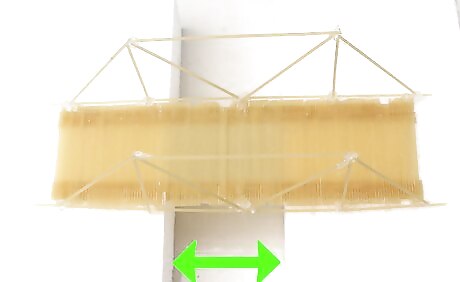
Limit the space your bridge must cover. The longer the gap a bridge has to span, the harder it will be to redistribute the weight from one area across the entire bridge. So, if it is up to you, making a shorter bridge will help your bridge sustain more weight.
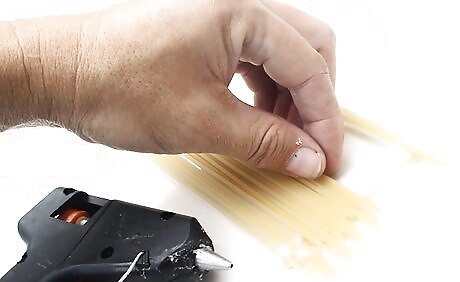
Strike a balance. There is a relationship between the weight and strength of your bridge. Adding more pasta to your bridge during construction, when properly built, should add strength, but also adds more weight. The heavier your bridge is, the more likely it is that it will collapse when extra weight is applied. So, make sure you account for the weight of your bridge when designing your bridge.
Entering Your Bridge for Competition

Identify where to compete. A number of schools, school districts, science museums, universities, and engineering-oriented groups hold spaghetti bridge building competitions. Find one in your area and sign up. Some competitions have various categories for different types of bridges. Make sure you identify what type of bridge you want to build for the competition and enter it into the correct category.
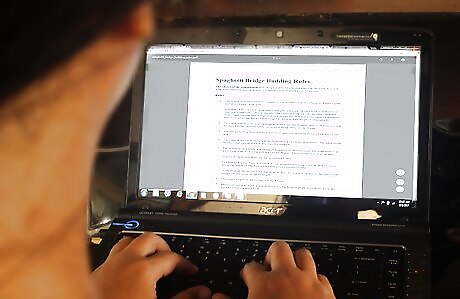
Read the rules closely. Spaghetti bridge building contests have unique rules about sanctioned building materials, size limitations or restrictions, types and sizes of weights, etc… Be sure to read and follow all of the rules carefully. You don’t want to get disqualified.
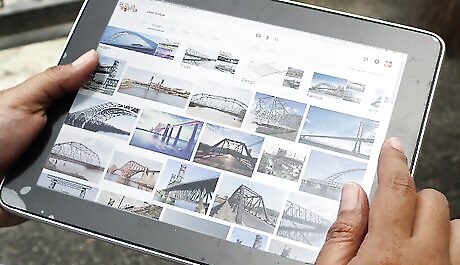
Look for inspiration. You can find inspiration for your spaghetti bridge by looking at actual bridges around the world. Bridges are unique feats of engineering, with each one being built to very exact specifications. As such, looking at real life bridges can give you some great ideas to outdo the competition when the time comes.
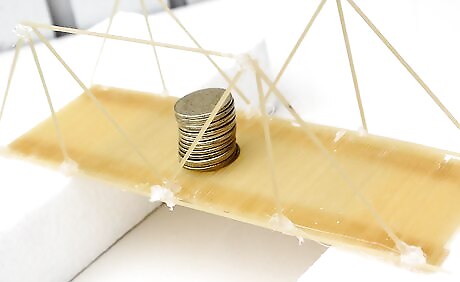
Practice. Each spaghetti bridge building competition is different and, as such, will employ a different system of applying weight to the bridge to make it collapse. It is wise to start preparing early and to use the same type and placement of weights to test the strength of the bridge you will build.
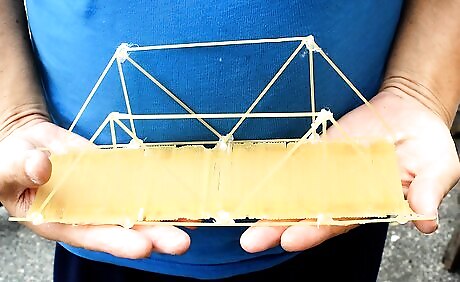
Be careful when moving your bridge. While some bridge competitions require that you build your bridge on-site, others may require you to bring an already built bridge to the competition. If this is the case, make sure you have a safe and effective way to move your bridge from point A to point B without breaking or weakening your bridge.


















Comments
0 comment